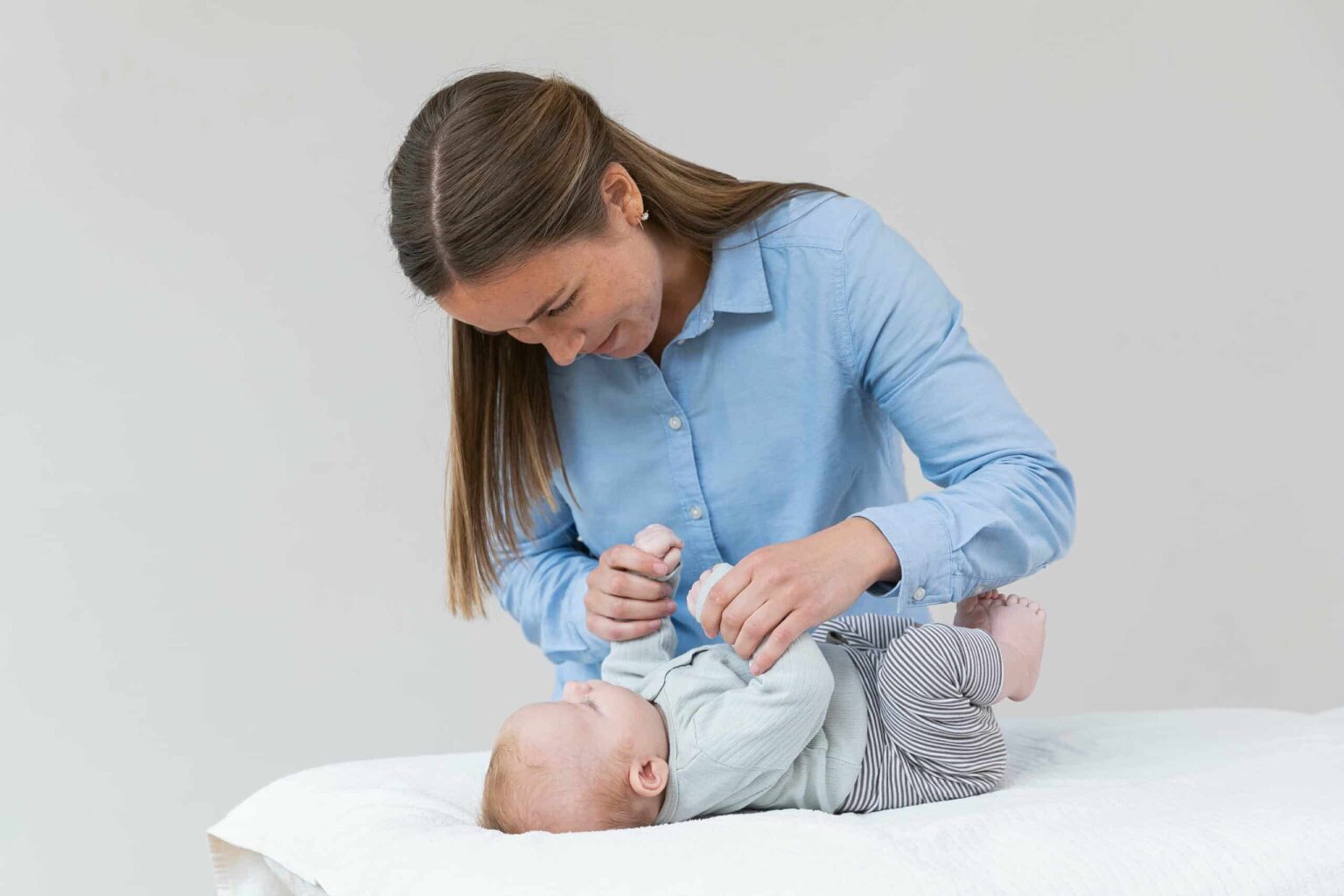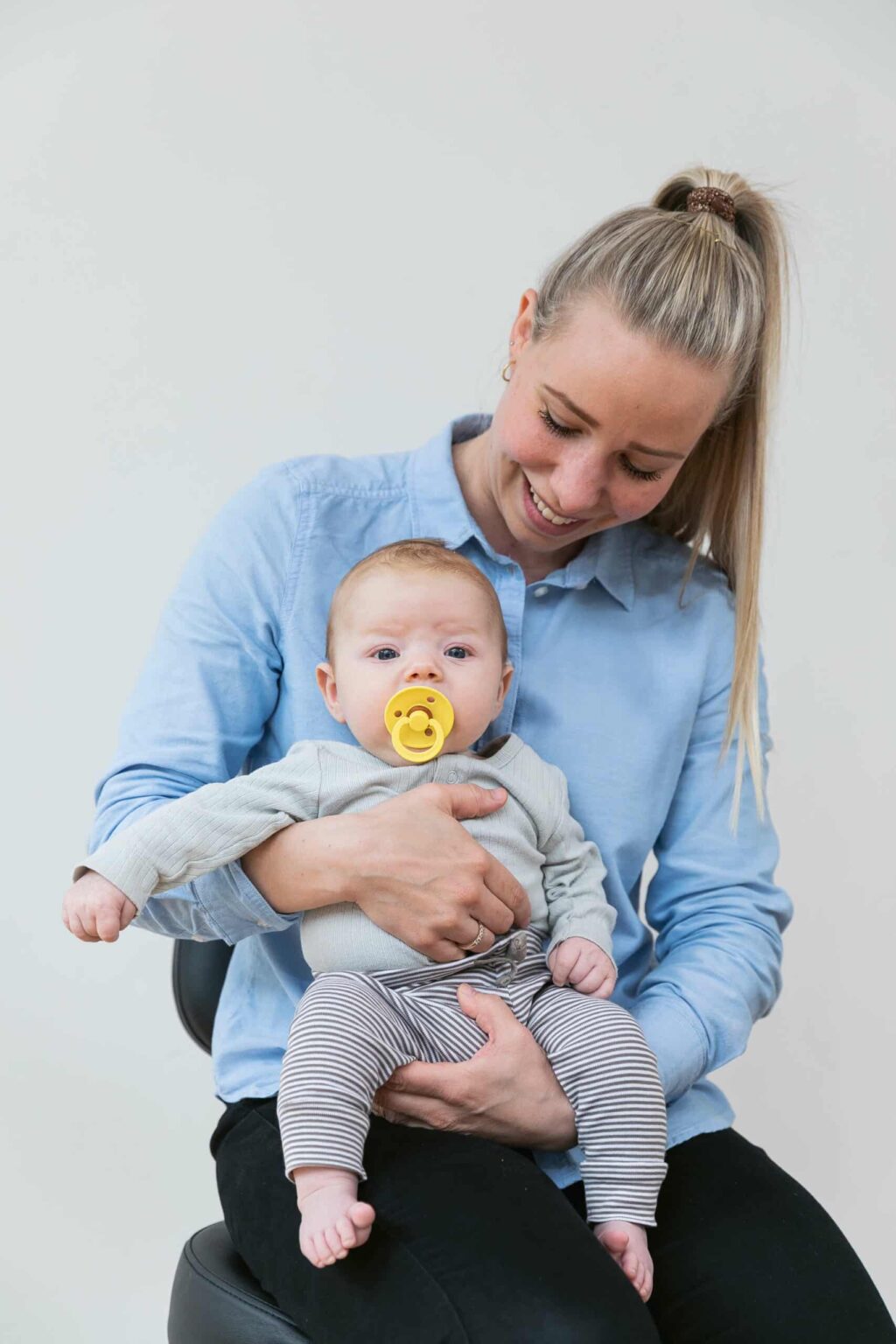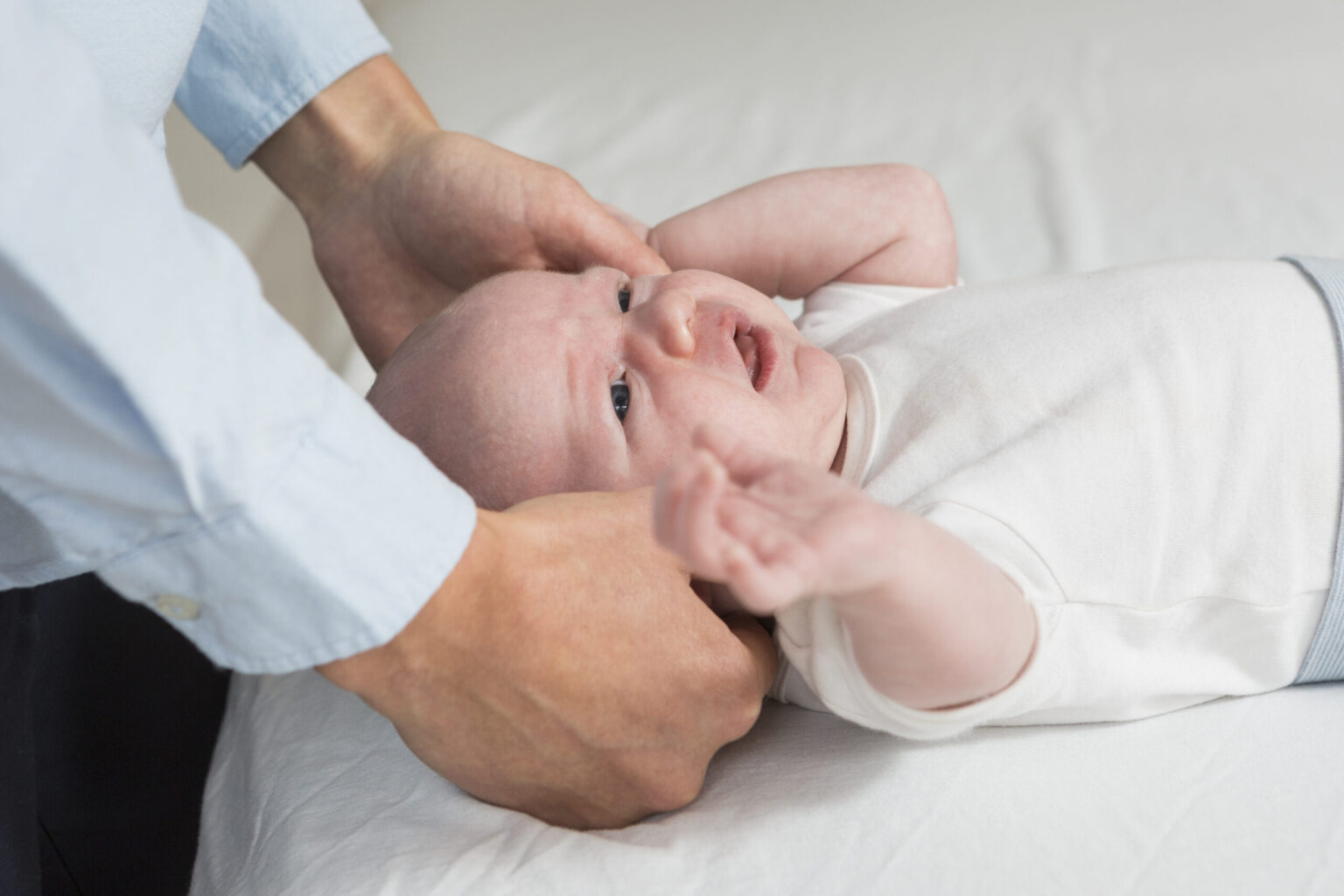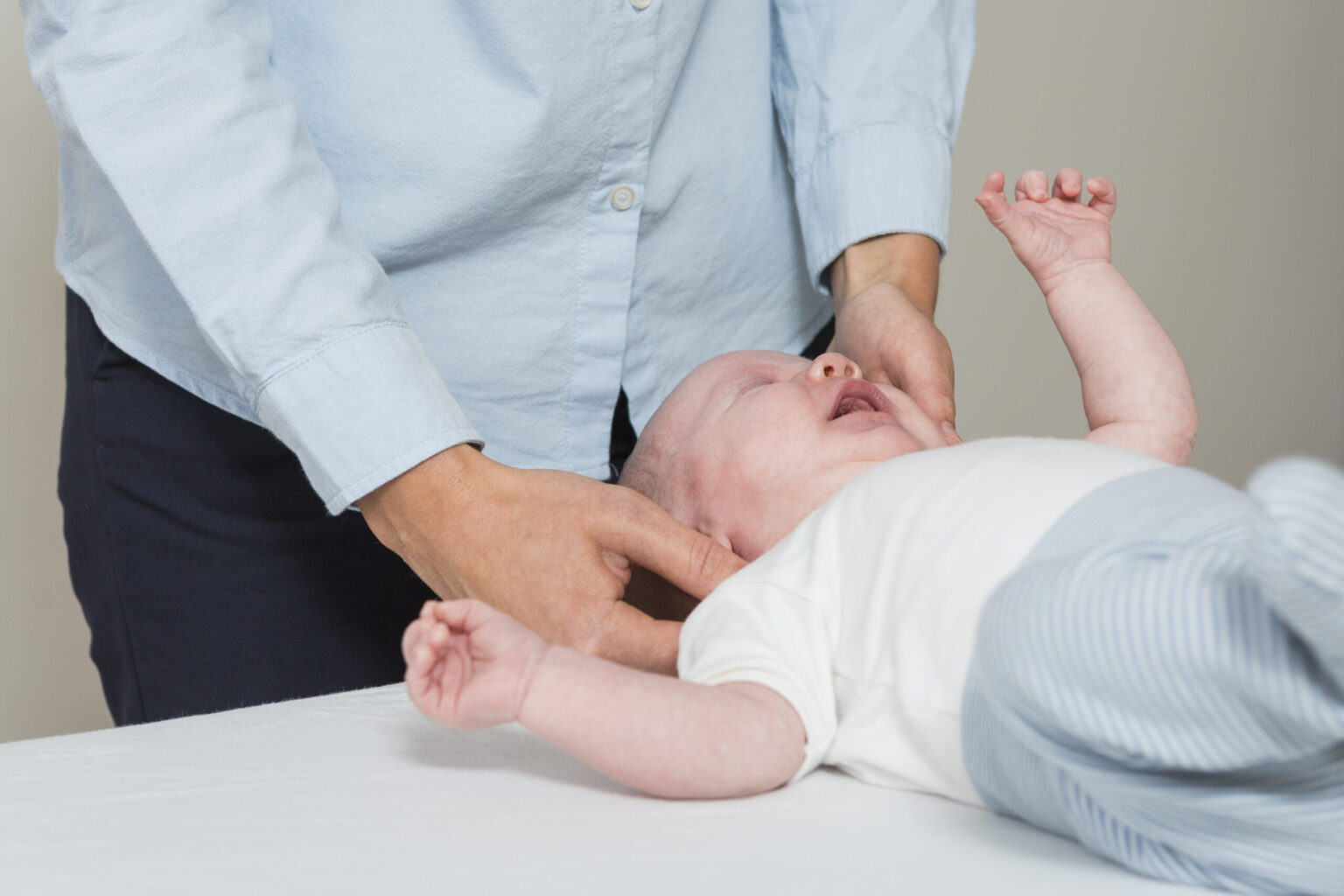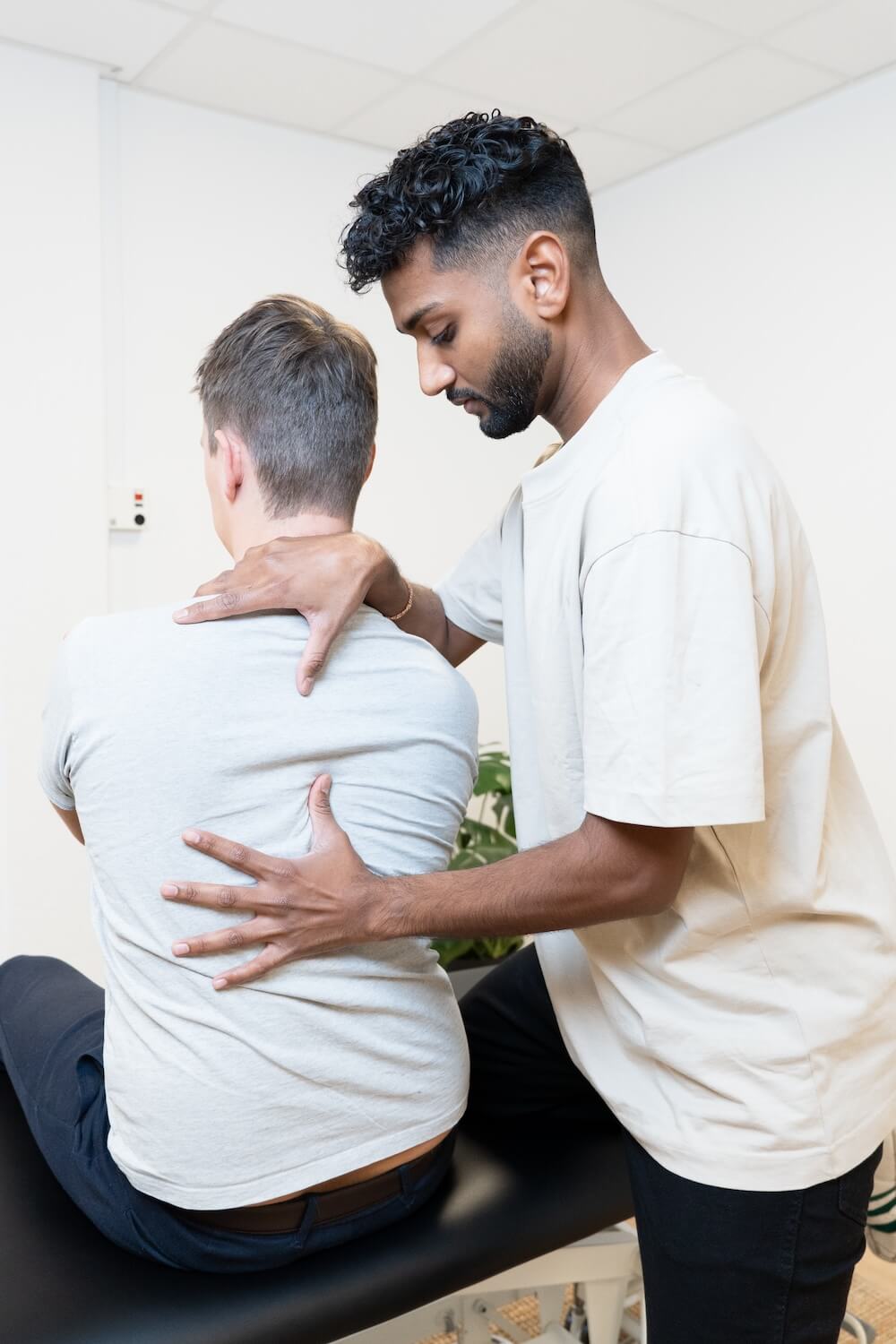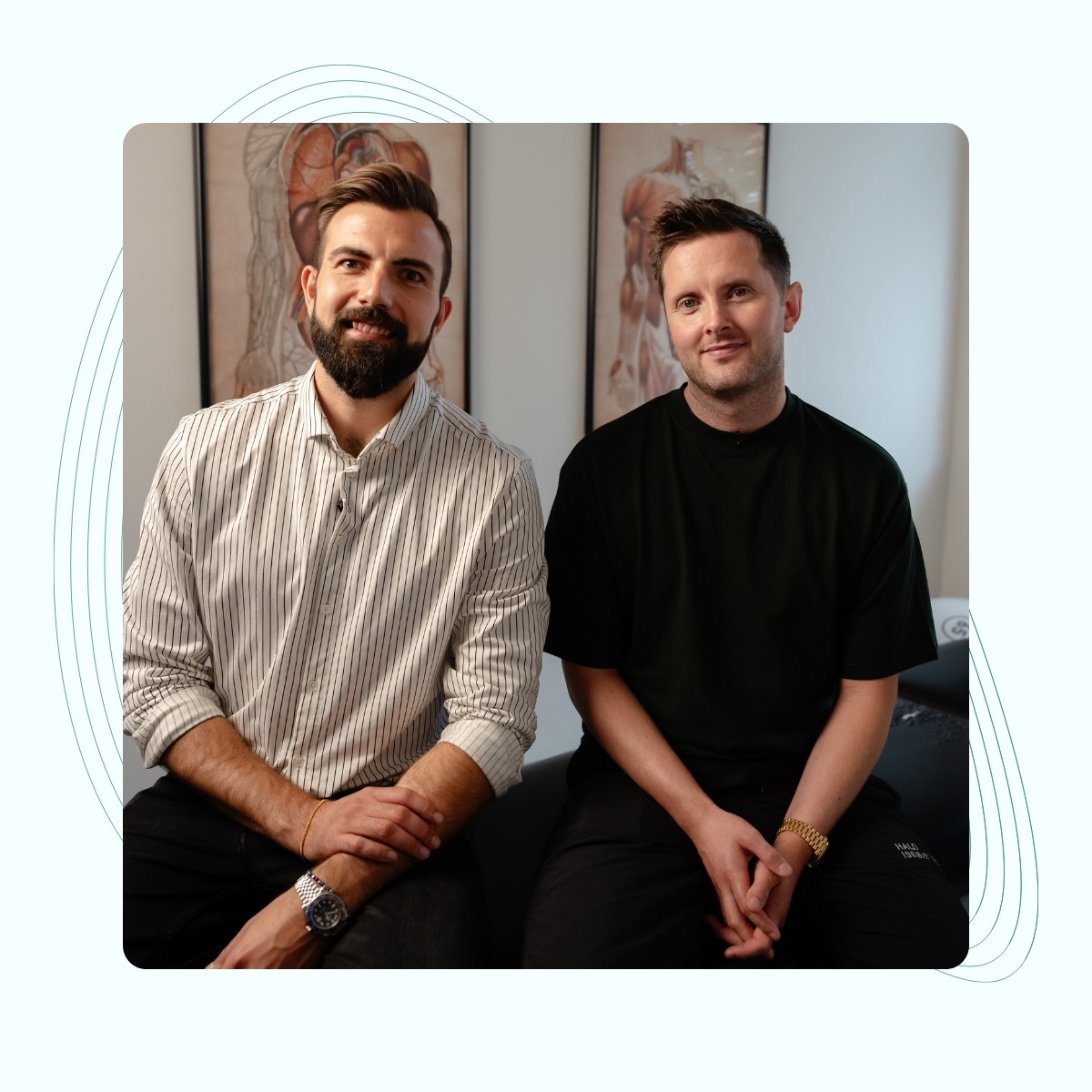We offer gentle osteopathic support for
Gentle osteopathic support for babies’ comfort and movement.”
Learn more about flat and uneven head shapes in babies
What is a flat or uneven head shape in babies?
A baby’s skull is naturally soft and adaptable in the first months of life to allow for growth and development. The skull is made up of several bones, and the part that forms the round shape of the head, the neurocranium, is often where parents may notice differences in shape.
In early infancy, it is quite common for the head to develop a slightly flatter area on one side or at the back. This can happen for many different, non-medical reasons, including sleeping position or natural preferences for turning the head one way more than the other. When this occurs, parents or health professionals may also observe that the forehead or ear on the same side appears a little more forward, creating a visible asymmetry.
These variations in head shape are very common and usually improve as babies grow, become more mobile and spend more time upright or on their tummy during supervised play.
Jump to section [Vis]
What parents may notice with a flat or uneven head shape
Parents often first spot differences in their baby’s head shape when looking from above. Instead of appearing evenly rounded, one side may look slightly flatter, giving the head a more angled or “parallelogram-like” appearance.
Some parents also notice:
- a preference for lying on one side, which can contribute to flattening
- thinner or less hair on the side that spends more time against the mattress
- a subtle shift in the position of the ear or forehead on the flatter side, which can make the asymmetry more noticeable
These observations are common in early infancy and often change naturally as the baby becomes more mobile, spends more time upright, and engages in supervised tummy time during the day.

What can contribute to a flat or uneven head shape?
It is recommended that young babies sleep on their backs, as this is the safest position for reducing the risk of sudden infant death syndrome (SIDS). Because babies spend a lot of time lying on their backs in the first months, the soft bones of the skull may naturally become flatter in the areas that rest most often against the mattress.
Some babies also prefer turning their head to one particular side when resting or sleeping. When this preference continues over time, it can contribute to an uneven head shape simply because one area of the skull receives more pressure than the other.
A baby may also appear to have a slightly uneven head shape from birth. This can happen for many reasons, such as the baby having spent a long time in one position during pregnancy, limited space (for example in twin pregnancies), or the natural moulding that can occur during labour.
These variations are common and usually improve as babies grow, become more active, and spend more time upright or on their tummy during supervised play.
If parents have concerns about head shape, they can speak with their GP, midwife or health visitor for reassurance and advice about positioning and routine daily care.
What should parents pay attention to?
Parents of babies born prematurely may notice differences in head shape more easily, as premature infants often have softer skulls for a longer period and may spend more time lying on their backs due to their early developmental needs. This can naturally increase the likelihood of flatter areas forming.
It can also be helpful for parents to observe how their baby prefers to position their head. Some babies naturally tilt or turn their head more to one side, either when resting or when looking around. When this preference continues over time, it may contribute to an uneven head shape simply because one side is in contact with the mattress more often.
If parents notice a strong preference for turning the head only one way, or if the baby seems to keep the head tilted to one side, it can be useful to discuss this with a GP, midwife or health visitor. They can offer guidance on positioning, comfort strategies and whether any further assessment is needed.
Osteopathic sessions may offer gentle support for a baby’s general comfort, relaxation and ease of movement, but they are not a treatment for head shape. Advice about head positioning, daily routines and developmental play is typically provided by health professionals such as health visitors, physiotherapists or GPs.

Supporting a baby’s head shape during early development
Because babies spend a great deal of time lying on their backs in the first months of life, it is common for certain areas of the skull to become flatter simply due to pressure on the same spot. Back-sleeping remains the safest position for reducing the risk of SIDS, and these guidelines should always be followed.
During waking hours, however, there are gentle ways parents can help vary their baby’s position and support natural head-shape development:
- Offer supervised tummy time when the baby is awake. Even short periods help build strength in the neck, back and shoulder muscles and encourage more varied movement as the baby grows.
- Alternate head positions during sleep, if the baby naturally turns their head to the same side. Gently encouraging variation can help distribute pressure more evenly, while always keeping the baby on their back for sleep.
- Vary positions during daily routines. Small changes such as switching the arm you carry the baby on, or the direction the baby faces in a sling or carrier, help encourage looking and turning both ways.
- During supervised rest, you can gently encourage the baby to turn their head toward toys, light or your voice on the less-preferred side, helping stimulate movement and curiosity.
- In car seats, prams and bouncers, check from time to time whether the baby tends to turn the head to the same side, and gently adjust positioning if needed.
If parents have concerns about a strong head-turning preference or are unsure how best to support their baby’s positioning, they can speak with a GP, midwife, health visitor or paediatric physiotherapist for personalised advice.
Osteopathic sessions may offer gentle support for overall comfort and ease of movement, but guidance on head shape and positioning is usually provided by the relevant healthcare professionals.
When should parents seek guidance?
There is a rare medical condition called craniosynostosis, where one or more of the seams between the skull bones close earlier than expected. This affects how the skull grows and usually becomes noticeable very early in life. It occurs in roughly 1 in 2,000 newborns and, if suspected, babies are referred to specialist paediatric teams who assess whether further investigation or intervention is needed.
However, the vast majority of uneven or flatter head shapes in infancy are related to the amount of time babies spend lying on their backs in the first months of life. This is often referred to as positional flattening and is very common as the skull is still soft and mouldable during early development.
If parents notice that their baby’s head looks uneven or asymmetrical, it can be helpful to speak with a GP, midwife or health visitor for reassurance and guidance. Head shape is often easiest to observe from above, and health professionals can offer advice on positioning and everyday routines.
Some babies seem to prefer turning their head to one side more than the other. If this preference is strong or persistent, or if parents find their baby favouring the same direction when resting, feeding or sleeping, a healthcare professional can help assess whether additional guidance on positioning or movement would be useful.
Osteopathic sessions may offer gentle support for overall comfort and ease of movement, but assessment of head shape, feeding and neck positioning should always be guided by the appropriate medical or paediatric professionals.

Approaches used in some cases of uneven head shape
In a small number of countries, some families are offered what is known as helmet therapy. This involves using a specially fitted helmet during a period of rapid skull growth, with the aim of encouraging a more symmetrical head shape. This approach is typically considered only after assessment by the relevant paediatric specialists and is not routinely recommended in all healthcare systems.
Surgical treatment of the skull is very rare and is generally only discussed in cases where a condition such as craniosynostosis is identified. As mentioned earlier, this affects approximately 1 in 2,000 babies and is managed exclusively by specialist medical teams.
For the vast majority of infants, positional differences in head shape improve naturally over time as babies grow, move more independently and spend less time lying on their backs.
Osteopathy and uneven head shape in babies
Osteopathy for babies focuses on gentle, hands-on support aimed at promoting comfort, relaxation and ease of movement. Sessions take the whole baby into account, including how they move, settle and respond to different positions throughout the day.
When parents notice flatter or uneven areas on their baby’s head, the most important factors are often related to positioning and the amount of time spent lying on the back. Everyday adjustments such as supervised tummy time, varying head position and offering different carrying positions play a key role in supporting natural head-shape development.
Osteopathic sessions may complement these strategies by providing:
- Gentle, calming techniques to support overall comfort and ease of movement
- Assessment of general movement patterns, such as how freely the baby turns their head in both directions
- Soft, non-invasive handling, which may help babies feel more relaxed during daily routines
- Guidance for parents on ways to vary positioning during feeding, carrying and play (within accepted safe-sleep guidelines)
These sessions do not aim to change head shape directly or treat medical conditions, but rather to support a baby’s comfort and natural ability to move in varied ways as they grow.
If parents have concerns about head shape, feeding, neck mobility or settling patterns, it is always recommended to seek advice from a GP, midwife, health visitor or paediatric physiotherapist. These professionals can provide assessment, reassurance and guidance on developmental care.

